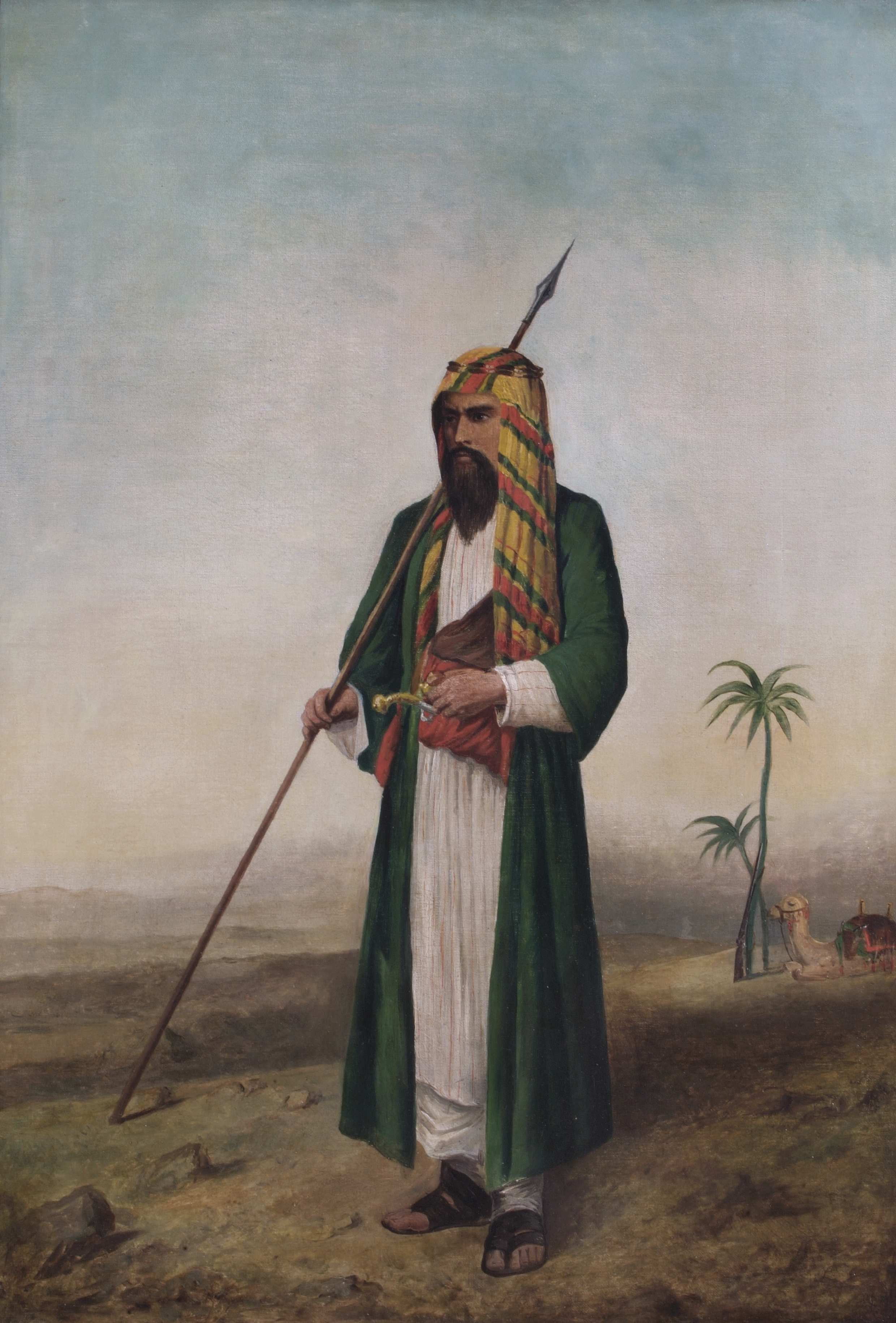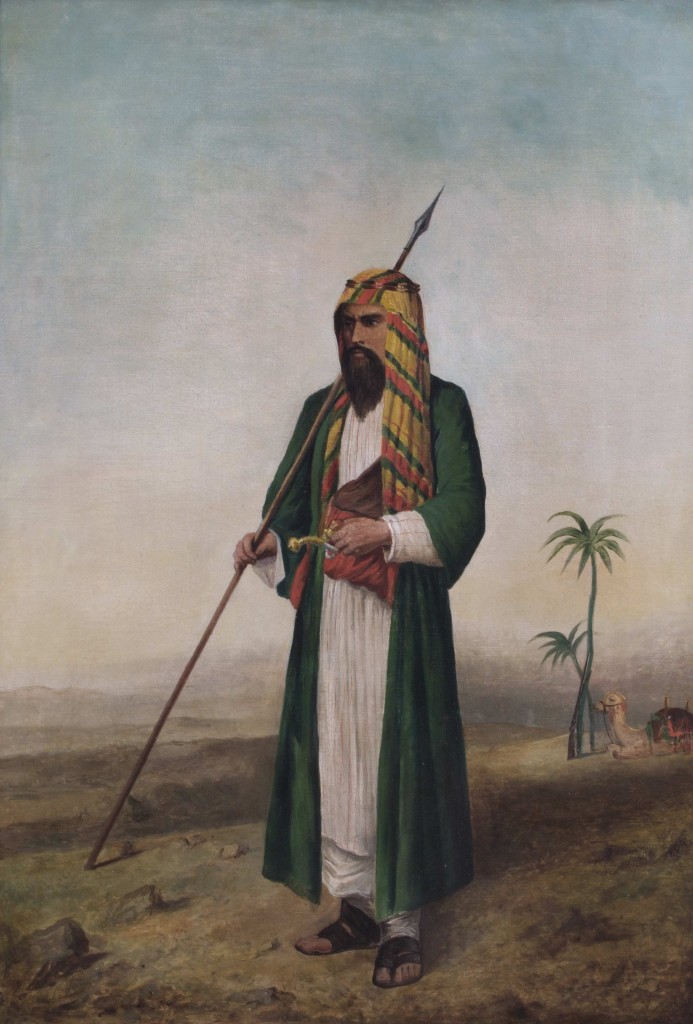Following Burton’s footsteps by Chris Burton

Richard Burton as Haji Abdullah © Orleans House Gallery
On Thursday 22nd January, I travelled to the Heinz Archive along with a colleague, Euan, as part of our Understanding British Portraits project. The portrait in question is of Richard Francis Burton, the famous Victorian explorer, in disguise as Haji Abdullah on his expedition to Mecca in 1853.
Our aim was to use the archives to research the artists attributed to the painting and the portrait itself. The Heinz archive was founded in 1856 and holds over 1 million records of British portraits held in public and private collections. We considered these to be suitable credentials, and concluded that if there was information to be found, it would be at the Heinz Archive.
The archive is broadly categorised by subject. The two categories of interest to us were the Sitter Boxes, and the Artist Boxes. We decided to divide and conquer, and so I began looking through the Sitter Boxes for Richard Francis Burton, while Euan started on the Artist Boxes, looking for the various artists attributed to our portrait.
The search started well as I found the box for Richard Francis Burton containing a wealth of information about his various sittings. It was also a very pleasant surprise to find a few images of his self-portraits in ink, pictures that we had heard about but never seen before!
Unfortunately, there was no mention of our particular portrait in with the records, and so our hope now rested with the artist boxes.
Having moved through Cassati and Caratti without success (one doesn’t exist and the other was an obscure theatre set painter), we moved on the more famous artists. Letchford was the next to be eliminated as his style and skill did not match our portrait. Leighton followed soon after, but was an outside bet from the start. Finally, we reached Thomas Seddon, an artist who is known to have met Burton and painted him during one of his travels. We found ourselves hopeful, as the content of the painting is very similar to our portrait; however the technique and skill level was so disparate to our mystery artist that we couldn’t confidently make a connection.
Just as we were about to leave dispirited, we noticed a comment that Edward Lear had been with Seddon when Seddon had produced his portrait of Burton. Considering the very similar content of the paintings, we thought it a distinct possibility that Lear may have painted a portrait of Burton at the same time as Seddon, or at least produced a copy of Seddon’s portrait at a later date.
Newly invigorated, we tracked down Edward Lear’s artist records. Upon opening his box, we found a very sparse selection of work, mostly ink sketches and cartoons. However, nestled at the bottom of the box, was an image showing a portrait of William Wallace painted by Lear. The most striking thing about this portrait was the face. The face of William Wallace was very similar in style to the face of Richard Burton in our portrait, and the skill level appeared very similar between the two.
The conclusion that we drew from this was that the similarity between our portrait of Burton and the portrait of William Wallace was exceptionally strong. The paintings showed equal skill levels, specifically regarding the representation of clothing and skin. The faces of the two portraits had a very similar appearance, utilising the same style and shapes.
This combination of factors, along with the knowledge that Lear was associated with Seddon and Burton during one of Burton’ s travels, during which time a number of portraits were produced showing Burton in his Arab costume, reinvigorated our research with a new theory: that the portrait was painted by Edward Lear.



